All Video Classes Extra Credit
The List: Watching Old Movies
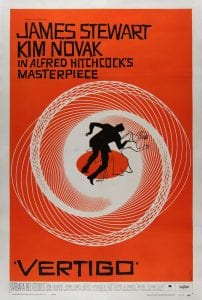 Do you want to earn extra credit? You can earn up to 5 points of extra credit! For each movie you watch!
Do you want to earn extra credit? You can earn up to 5 points of extra credit! For each movie you watch!
Watch any movie on The List (see link below). Write a paragraph about whether you liked it and why. Cite three specific reasons using the language of film critique we have discussed (see rubric below).
There are also ways to earn extra extra credit! Plus 1 extra point if it was made before 1990 and another extra if it was made before 1939! Plus another if it is in a foreign language! Foreign language movies are highlighted in
This list contains a wide variety of movies, some of which are not appropriate for younger viewers. Check with your parents before watching any movie rated R. Also, some movies are “Not Rated.” If they’re made before 1967, they’re appropriate. If they’re made after that, they’re probably not.
Finished paragraphs can be submitted to Mr Rauscher on paper or by (rauscha@dearbornschools.org). Make sure to put the name of the movie and “The List” in the title. You must submit before Friday, June 7 at 11:59pm.
The List
(https://docs.google.com/document/d/1qDIu4n_aMNdWlFDxzW7GDkVLFyfWX1KzE9BUdc2n78g/edit?usp=sharing)
The Rubric
- You state clearly how you feel about the movie (2 points)
- Three specific reasons are given for your feelings. Each reason mentions a specific moment from the film and uses the language of critique we learned in class (3 points)
- The movie is in a foreign language (1 point)
- The movie was made before 1990 (1 point)
- The movie was made before 1939 (1 point)
Total Score: /5
Posted in Movie and Video, Movie Making, Studio, Video Production and tagged character, cinematography, Extra Credit, film critique, screenwriting, The List, Vocabulary by Adam Rauscher with no comments yet.
Video Extra Credit Assignment
To get you through the rough weather, here is an extra credit assignment! It will be due Tuesday February 19th. It is worth up to 20 formative points. This is for all three video classes.
Watch one of the movies listed below (all are available on Netflix) and answer the question associated with it. Write at least two paragraphs. Your ability to cite specific details will affect your score.
The Third Man (1949), Not Rated – Pulp novelist 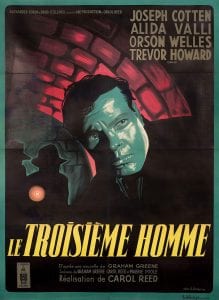 Holly Martins travels to shadowy, postwar Vienna, only to find himself investigating the mysterious death of an old friend, Harry Lime.
Holly Martins travels to shadowy, postwar Vienna, only to find himself investigating the mysterious death of an old friend, Harry Lime.
The introduction of Orson Welles’ character is often called the greatest character introduction ever. What techniques does the movie use before he appears and when he appears to make this so?
Schindler’s List (1993), R – In German-occupied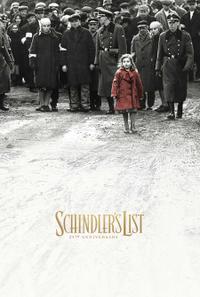 Poland during World War II, Oskar Schindler gradually becomes concerned for his Jewish workforce after witnessing their persecution by the Nazi Germans.
Poland during World War II, Oskar Schindler gradually becomes concerned for his Jewish workforce after witnessing their persecution by the Nazi Germans.
Critics praise Steven Spielberg and Janusz Kaminski’s use of color. How do their color choices underline the story, themes, and questions of the film?
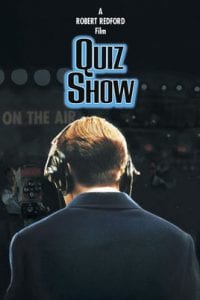 Quiz Show (1994), PG-13 – A young lawyer, Richard Goodwin, investigates a potentially fixed game show. Charles Van Doren, a big time show winner, is under Goodwin’s investigation.
Quiz Show (1994), PG-13 – A young lawyer, Richard Goodwin, investigates a potentially fixed game show. Charles Van Doren, a big time show winner, is under Goodwin’s investigation.
This is the film that put television on trial. How does the film try to emulate techniques of television (acting, cinematography, editing, music, set design)?
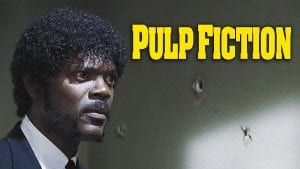 Pulp Fiction (1994), R – The lives of two mob hitmen, a boxer, a gangster’s wife, and a pair of diner bandits intertwine in four tales of violence and redemption.
Pulp Fiction (1994), R – The lives of two mob hitmen, a boxer, a gangster’s wife, and a pair of diner bandits intertwine in four tales of violence and redemption.
Pulp Fiction uses a MacGuffin, an object that has no meaning beyond being a plot point. Why did the filmmakers choose to never actually say what the MacGuffin is? How does this affect the movie?
 Monty Python and the Holy Grail (1975), PG – King Arthur and his Knights of the Round Table embark on a surreal, low-budget search for the Holy Grail, encountering many, very silly obstacles.
Monty Python and the Holy Grail (1975), PG – King Arthur and his Knights of the Round Table embark on a surreal, low-budget search for the Holy Grail, encountering many, very silly obstacles.
Great satire isn’t just references. It is critical of its source material. What does this film say about the Arthurian legend? How else does it criticize movies, stories and legends?
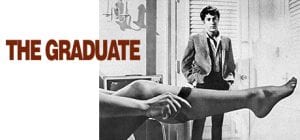 The Graduate (1967) – A disillusioned college graduate finds himself torn between his older lover and her daughter.
The Graduate (1967) – A disillusioned college graduate finds himself torn between his older lover and her daughter.
The Graduate made superstars of musicians Simon and Garfunkel. How does the movie’s use of music affect its mood, tone, and story? How does the music affect its place in history?
 Ghostbusters (1984), PG – Three former parapsychology professors set up shop as a unique ghost removal service.
Ghostbusters (1984), PG – Three former parapsychology professors set up shop as a unique ghost removal service.
Dan Akroyd (star and co-writer) is obsessive about the paranormal. How does the movie walk the fine line between seriously exploring supernatural events and mocking those who believe in them at the same time?
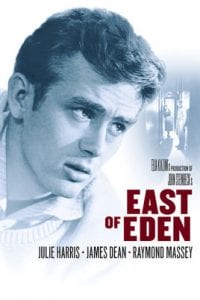 East of Eden (1955), PG – A willful young man contends against his brother for the attention of their religious father while reconnecting with his estranged mother and falling for his brother’s girlfriend.
East of Eden (1955), PG – A willful young man contends against his brother for the attention of their religious father while reconnecting with his estranged mother and falling for his brother’s girlfriend.
James Dean represented a departure from the strong silent types that starred in movies before. What types of choices in acting mark him as different?
Clerks (1994), R – A day in the lives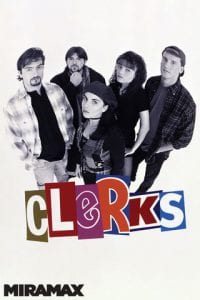 of two convenience clerks named Dante and Randal as they annoy customers, discuss movies, and play hockey on the store roof.
of two convenience clerks named Dante and Randal as they annoy customers, discuss movies, and play hockey on the store roof.
How does the low budget aesthetic (artistic style) of Clerks work with its story and characters?
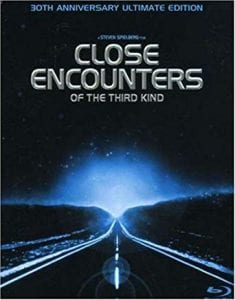 Close Encounters of the Third Kind (1977), PG – Roy Neary, an electric lineman, watches how his quiet and ordinary daily life turns upside down after a close encounter with a UFO.
Close Encounters of the Third Kind (1977), PG – Roy Neary, an electric lineman, watches how his quiet and ordinary daily life turns upside down after a close encounter with a UFO.
Close Encounters is very concerned with different languages. What languages and forms of communication are depicted? How do the themes and story relate to language?
Posted in Blogs, Movie and Video, Movie Making, Studio, Video Production and tagged acting, aesthetic, character, cinematography, Clerks, Close Encounters, Close Encounters of the Third Kind, Dan Akroyd, direction, East of Eden, editing, Extra Credit, film critique, Ghostbusters, introduction, James Dean, Janusz Kaminski, MacGuffin, Monty Python and the Holy Grail, music, Orson Welles, satire, Schindler's List, screenwriting, Shot Selection, Simon and Garfunkel, Steven Spielberg, television, The Graduate, The Third Man by Adam Rauscher with no comments yet.
Advanced Video: Archetype Introductions
In our exploration of character, we 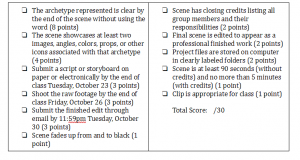 focused on the archetypes proposed by Carl Jung. These are the character types that everyone in our society knows and has a gut reaction to. You can read about them here: Video_ Jungian Archetypes
focused on the archetypes proposed by Carl Jung. These are the character types that everyone in our society knows and has a gut reaction to. You can read about them here: Video_ Jungian Archetypes
We also discussed character introductions and how certain images and iconography helps announce these archetypes.
Your assignment (Rubric: Video Rubric_ Archetype Entrance) is to create a video that introduces one of these archetypes. You should use the iconography to make it clear what your archetype is.
Past projects were not completed on schedule. Therefore, meeting schedules is an important part of this assignment. Each phase has a specific deadline. Each school day you are late on each deadline would lose one point. These deadlines account for about 1/3 of the grade.
The groups were assigned and can be seen below.
Trickster: Jacob, Yara, Samer, Tristan
Explorer: Joze, MeiLing, Nader, Ali
Magician: Andre, Adonis, Will
Everyman: Matt, Joseph, Alex, Eman
Posted in Blogs, Movie and Video, Video Production and tagged archetypes, character, group project, introduction, Jung, project by Adam Rauscher with no comments yet.
Homework: Movie Making: Character Map
For Monday, complete the character map for a new,  original character of your design. Make a good one because you’ll be living with this character for the next two weeks. In the center bubble, write the character’s name. In the outside bubbles, answer some of the questions below. Choose what you think is central to understanding the character’s choices. Download the form here:
original character of your design. Make a good one because you’ll be living with this character for the next two weeks. In the center bubble, write the character’s name. In the outside bubbles, answer some of the questions below. Choose what you think is central to understanding the character’s choices. Download the form here:
Character Questions
- What are they afraid of?
- What do they want most?
- What’s their most vivid childhood memory?
- Who’s their favorite person?
- Do they get sick a lot?
- Where were they born?
- Who do they live with?
- What do they do for money?
- Are they married?
- Where did they go to school?
- What is the best thing that ever happened to them?
- How do they want people to see them?
- What’s their weakness?
Posted in Blogs and tagged character, Homework by Adam Rauscher with no comments yet.